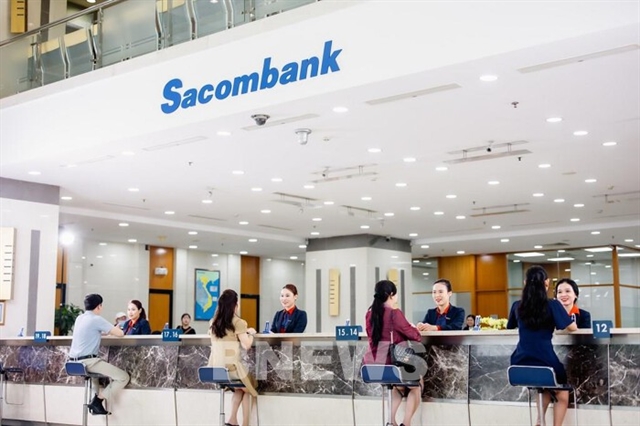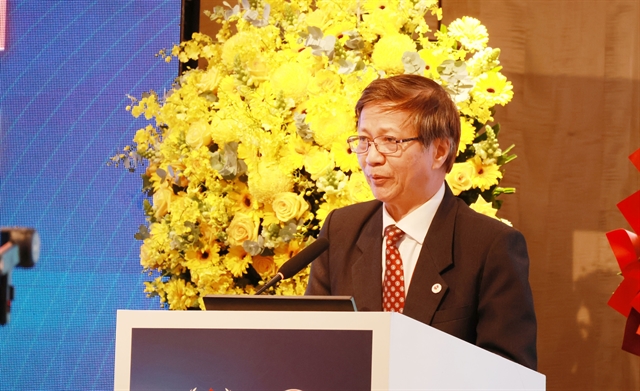 Economy
Economy

The Vietnamese rice market is expected to be stable in the third quarter of the year, chairman of the Vietnam Food Association (VFA) Huỳnh Thế Năng has said.
 |
| Demand for Vietnamese rice is expected to be stable in the third quarter of the year. — VNA/VNS Photo |
HCM CITY — Demand for Vietnamese rice is expected to be stable in the third quarter of the year, Vietnam Food Association (VFA) Chairman Huỳnh Thế Năng has said.
Thus, rice traders will not have to worry about finding consumption markets, he added.
The chairman made the statement after Vietnamese rice enterprises won contracts to supply 175,000 tonnes (MT) of rice to the Philippines through an open tender held by the country’s National Food Authority (NFA) on July 25.
According to the association, in the bidding for 2-per cent broken rice export to the Philippines, four Vietnamese traders totalled 175,000 tonnes in the tender at different winning prices.
Specifically, Southern Food Corporation 2 (Vinafood 2) won a bid for 50,000 tonnes of rice at a Free on Board (FOB) price of US$369.45 per tonne; International Joint Stock Company won 50,000 tonnes for $357 to $367 per tonne; Tân Long Group Joint Stock Company won 50,000 tonnes of rice for $354 to $359 per tonne; and Hiệp Lợi Joint Stock Company hit 25,000 tonnes with the best price of $370.9 per tonne.
This is the first time that private Vietnamese rice exporters were allowed to participate in such a bidding, and they proved they could meet the strict requirements put forward by the Philippines.
“Four enterprises among the total eight businesses winning the bid is a clear demonstration of the capacity of the Vietnamese rice traders,” Năng said.
The chairman said that the winning contracts would partly help stabilise domestic rice prices soon.
In addition to the rice export contracts to the Philippines, domestic rice exporters are also preparing to deliver goods under the previously signed contracts to Cuba, Bangladesh and Malaysia.
“Therefore, from now until the end of the third quarter of 2017, Vietnamese rice sector will not struggle with the settlement of output for farmers.”
According to VFA, demand for rice in Asia recently had positive impact on the rice exports of Việt Nam this year.
There are several new emerging needs that motivate the market. For example, Bangladesh, after three rounds of bidding for 150,000 tonnes of rice and having bought 250,000 tonnes from Việt Nam, is also negotiating 200,000 tonnes with Thailand and may continue to buy more from Việt Nam.
Sri Lanka is also urgently importing 55,000 tonnes of rice from Pakistan and Myanmar, and seeking supplies from other countries, including Việt Nam. Even the Philippines, in addition to the 250,000 tonnes bidding last week, may import more to shore up its stockpiles to ensure its food security. In addition to this, the consumption demand of China and India is expected to have an impact on the Vietnamese rice exports in the future.
However, whether the Vietnamese enterprises have access to these needs depends on their price competitiveness compared with the other export competitors, as well as the summer-autumn crop harvest in August and September.
Nguyễn Thanh Long, managing director of Việt Rice Co Ltd, said that if domestic rice prices "turn up" too high, Vietnamese rice exporters would find it hard to compete with foreign rivals while negotiating commercial contracts.
Currently, Việt Nam’s rice export prices are equal or a little bit higher than those of Thailand. For example, Thailand’s 5-per-cent broken rice is being offered at $395 per tonne, while that of Việt Nam is $407 per tonne, which will be profitable. If Vietnamese rice prices are not adjusted according to the Thai rice prices, it is difficult to attract demand and sign new contracts in the future.
According to the statistics of the Ministry of Agriculture and Rural Development, rice exports of the country in the first seven months of the year is estimated at 3.3 million tonnes, earning a revenue of $1.5 billion, up 15.7 per cent in volume and 13.7 per cent in value over the same period last year.
The rice export price in the first half of the year averaged $444.6 per tonne, down 1.4 per cent year-on-year. - VNS




